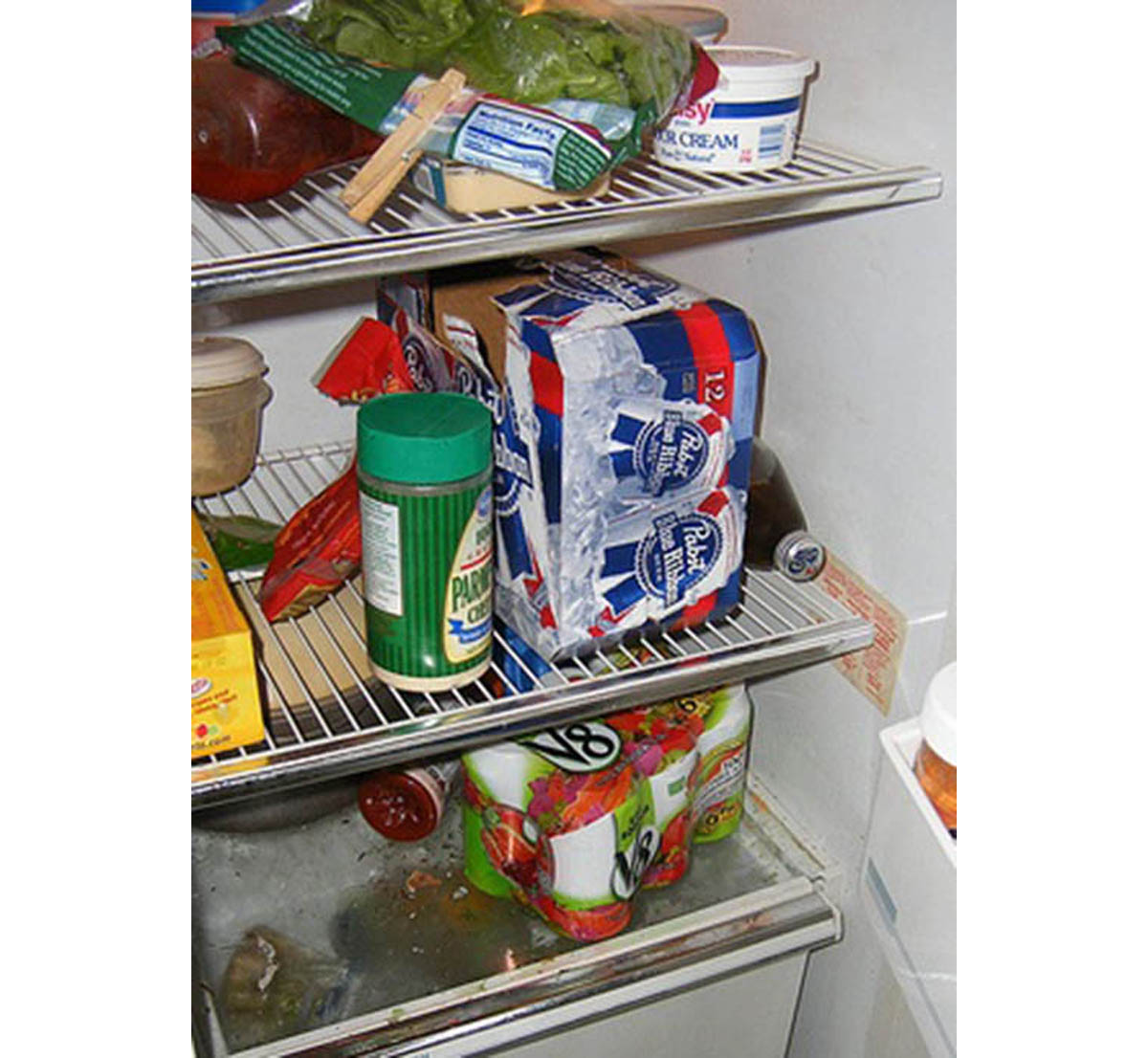
Now, the next time you use that sponge, you are spreading those germs all over the surface you are trying to clean. The more you "clean" with that sponge, the more germs you pick up and spread around. While many germs aren’t necessarily dangerous, some, such as Salmonella and E. coli, can make you and others who eat the foods you make very sick. Always make sure you clean your sponge properly after each use. Place the wet sponge in the microwave and microwave on high for 2 minutes. Alternately, dip your sponge into a solution of equal parts water and bleach, before rinsing it out properly and leaving it to dry. Always let sponges air dry after use and be sure to replace your sponge every 2 weeks.
Cutting Boards
No matter what ingredient you have to slice up, the first thing you’re likely to reach for is your cutting board. But while your cutting board can protect your countertops from scratches, it can also make you sick — or rather, it may harbor whole pathogenic colonies that can. When you use the cutting board to cut up raw poultry, meat or fish, bacteria from those uncooked foods can linger on the board even after it has been washed. The next day when you use that same cutting board to slice up your fresh veggies or a loaf of bread, those bacteria can contaminate your food. The solution? Simply use one cutting board for raw meats and another cutting board for vegetables, breads and cooked foods. Using a dishwasher is more likely to effectively kill the bacteria on your cutting board than handwashing your dishes is, by the way.Non-Stick Cookware
Many non-stick cookware items get their non-stick coating from dangerous chemicals known as PFOA. These chemicals are released into the air when cookware reaches high temperatures. They can leach into foods that are cooked in them and if the cookware is scratched, bits of the coating can flake off into the food. PFOA chemicals are hormone disrupters that are associated with a variety of health problems and have been linked to cancer. Opt for safer cookware options such as glass, stainless steel or cast iron.Antibacterial Kitchen Soaps
While antibacterial soaps may be a more effective way to fight germs and eliminate bacteria than regular kitchen soaps, they are also more likely to make you sick. Many antibacterial soaps contain the chemical pesticide triclosan, which can disrupt hormones and interfere with normal thyroid function. In addition, these soaps have been identified as partially to blame for the development of drug resistant superbugs. Opt for regular soaps or alcohol-based hand sanitizers instead.Air Fresheners
Many people rely on air fresheners to cover up cooking odors. The problem with air fresheners, whether sprays, candles, gels or plug-ins, is that they are full of harmful chemical ingredients known as volatile organic compounds (VOCs) that can cause a variety of health problems such as eye irritation, asthma, allergies and wheezing. They have also been linked to the development of cancer and hormonal imbalance. To get rid of kitchen odors, try using pure essential oils, cinnamon sticks, incense or beeswax candles instead.Kitchen Cleaners
Many commercial cleaning solutions contain dangerous hormone-disrupting chemicals and toxic carcinogens. These cleaners can irritate the eyes, nose, lungs and skin. The presence of these harmful chemicals can trigger asthma attacks and some can be very dangerous if inhaled without proper ventilation. Instead of exposing yourself to these harmful cleaning agents, opt for all natural cleaners that rely on natural vegetable oils and non-toxic surfactants for their cleaning power. Alternately, make your own cheap but very effective cleaning solution form water, vinegar and baking soda. This contains no harmful ingredients.The refrigerator
Most people are not in the habit of regularly checking the temperature in their refrigerator. By not doing so, you are putting yourself at risk of getting sick. Colder temperatures can help prevent bacteria from growing on food. For this reason, refrigerator temperatures should never rise above 40 degrees Fahrenheit. Clean your fridge regularly and do not store meats next to vegetables, ever.Kitchen Cabinets
Depending on the material used to make your kitchen cabinets, they may contain high levels of formaldehyde, another volatile organic compound. Particleboard cabinets that are made with UF binders are more likely to trap moisture and humidity. When this happens, the particleboard can start to break down, releasing toxic formaldehyde into the air. Not sure what materials your cabinets are made from?
Contact the manufacture, who will be able to answer any questions. If you do not know the manufacturer, consider hiring an environmental home specialist to come in and check your cabinetry for toxic chemicals.
Mold
Mold spores are all over the environment, all the time. Nothing you can do about that. When the humidity levels are high enough or the space has a constant source of moisture, however, those mold spores will settle down and start forming colonies, sometimes in as little as 24 hours. Some molds are toxic, while others cause allergic reactions. Many love your foods. Others will grow and in your walls and around leaky pipes.
- www.webmd.com/allergies/living-with-allergies-11/6-daily-habits-that-may-make-you-sick
- www.huffingtonpost.com/eatingwell/food-safety_b_1291585.html#s724756&title=Kitchen_Threat_3
- Photo courtesy of svensk on Flickr: www.flickr.com/photos/svensk/4831931648/
- Photo courtesy of bsdpunkblog on Flickr: www.flickr.com/photos/bsdpunkblog/2385643780/
- www.recalls.gov

